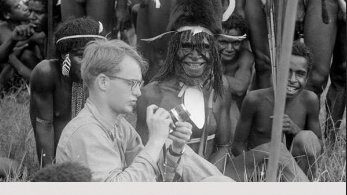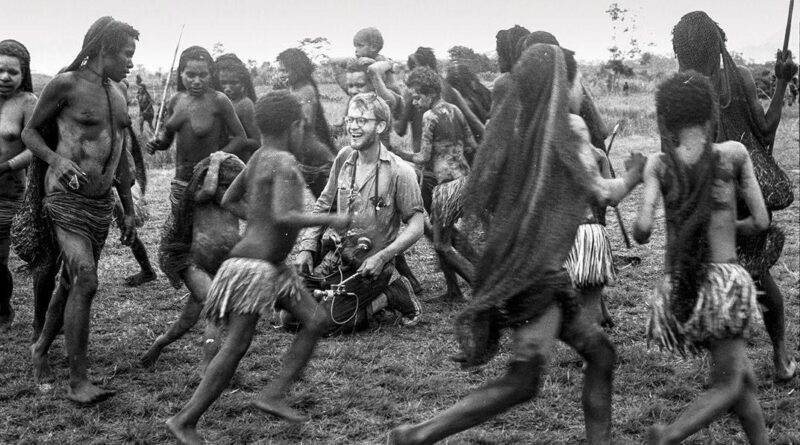Inside The Disappearance Of Michael Rockefeller
In 1961, Michael Rockefeller, the 23-year-old son of former Vice President Nelson Rockefeller, embarked on an ambitious journey to New Guinea. Driven by a passion for anthropology and art, Michael sought to immerse himself in the culture of the Asmat people, known for their intricate wooden carvings and complex social rituals. His fascination with the Asmat culture was more than academic; it was a genuine desire to understand and document their way of life, which led him to one of the most remote and dangerous regions of the world.
The Ill-Fated Expedition
Michael’s expedition to New Guinea took a tragic turn on November 17, 1961. Alongside his Dutch companion, René Wassing, Michael was navigating the treacherous waters of the southwestern coast in a makeshift trading canoe. Their mission was to collect Asmat artifacts and gain a deeper understanding of the tribe’s cultural practices. However, their journey was abruptly interrupted when their canoe capsized in the turbulent waters.

While the two native guides swam to get help, Michael made a fateful decision to swim to shore, believing it to be only a few miles away. René Wassing, who stayed with the canoe, was later rescued. Unfortunately, Michael’s desperate swim for safety marked the last time he was seen alive. For days, an extensive search operation was launched, involving local authorities, Rockefeller family resources, and international efforts. Despite the exhaustive search, no trace of Michael was found, leaving his family and the world in a state of anguished uncertainty.
The Haunting Revelations
Years passed without any definitive answers, but rumors and dark whispers began to emerge from the region. According to some accounts, Michael had been captured by the Asmat tribe, who were known for their headhunting and cannibalistic rituals. It was alleged that Michael was beheaded and his body consumed in a ritualistic act, a practice deeply rooted in the tribe’s spiritual beliefs and social customs.
These revelations, while never officially confirmed, gained traction through various investigative reports and testimonies from individuals familiar with the area. The idea that Michael met such a gruesome end captured the public imagination, turning his disappearance into one of the most mysterious and tragic stories of the 20th century. Journalists, historians, and adventurers have all attempted to piece together the events of that fateful day, but the true fate of Michael Rockefeller remains shrouded in mystery.
A Legacy of Exploration and Understanding
Michael Rockefeller’s disappearance was not just a personal tragedy for his family; it was a poignant reminder of the dangers faced by explorers and anthropologists who venture into uncharted territories. His passion for the Asmat culture and his willingness to immerse himself in their world were driven by a genuine desire to bridge cultural divides and foster mutual understanding.
In the years following his disappearance, Michael’s legacy continued to influence the fields of anthropology and art collection. His work helped bring international attention to the Asmat people and their remarkable artistic traditions. The artifacts he collected remain valuable pieces in museums and collections, serving as a testament to his dedication and adventurous spirit. Michael’s efforts to document and preserve Asmat culture have provided invaluable insights into a society that was largely unknown to the outside world.
The Aftermath and Continuing Mystery
Nelson Rockefeller and his family were deeply affected by Michael’s disappearance. Despite the lingering grief, they channeled their efforts into preserving his memory and continuing his work. The Rockefeller family’s philanthropy extended to supporting anthropological research and cultural preservation initiatives, ensuring that Michael’s passion would not be forgotten. The family’s commitment to education and the arts has left a lasting impact on the institutions they supported.
What happened to Michael remains a mystery even after all these years. Is it possible that he decided to give up everything & become part of one of the tribes in the area where he disappeared? The strange details about his disappearance: In 1961, Michael Rockefeller, the youngest son of former Vice President Nelson Rockefeller, and the grandson of American financier John D. Rockefeller Jr. disappeared during his journey through New Guinea. It was originally reported that Rockefeller either drowned or was attacked by a shark or saltwater crocodile. However, because headhunting and cannibalism were still present in some areas of Asmat in 1961, there has also been speculation that Rockefeller may have been killed and eaten by tribespeople.

A book titled Rocky Goes West by author Paul Toohey claims that, in 1979, Rockefeller’s mother hired a private investigator to go to New Guinea and try to resolve the mystery of his disappearance. The reliability of the story has been questioned, but Toohey claims that the private investigator swapped a boat engine for the skulls of the three men that a tribe claimed were the only white men they had ever killed. The investigator returned to New York and handed these skulls to the family, convinced that one of them was the skull of Rockefeller. If this event did actually occur, the family has never commented on it. However, the History Channel program Vanishings reported that Rockefeller’s mother did pay a $250,000 reward to the investigator which was offered for final proof whether or not Michael Rockefeller was alive or dead.
The mystery surrounding Michael Rockefeller’s fate has inspired numerous books, documentaries, and articles. Each retelling of his story delves into the various theories and evidence, keeping the intrigue alive. Some accounts focus on the cultural context of the Asmat tribe, exploring how their practices were misunderstood and sensationalized by outsiders. Others examine the broader implications of his disappearance on the perception of remote cultures and the ethics of anthropological exploration. The fascination with Michael’s story speaks to a broader human curiosity about the unknown and the lengths to which people will go to uncover the truth.

